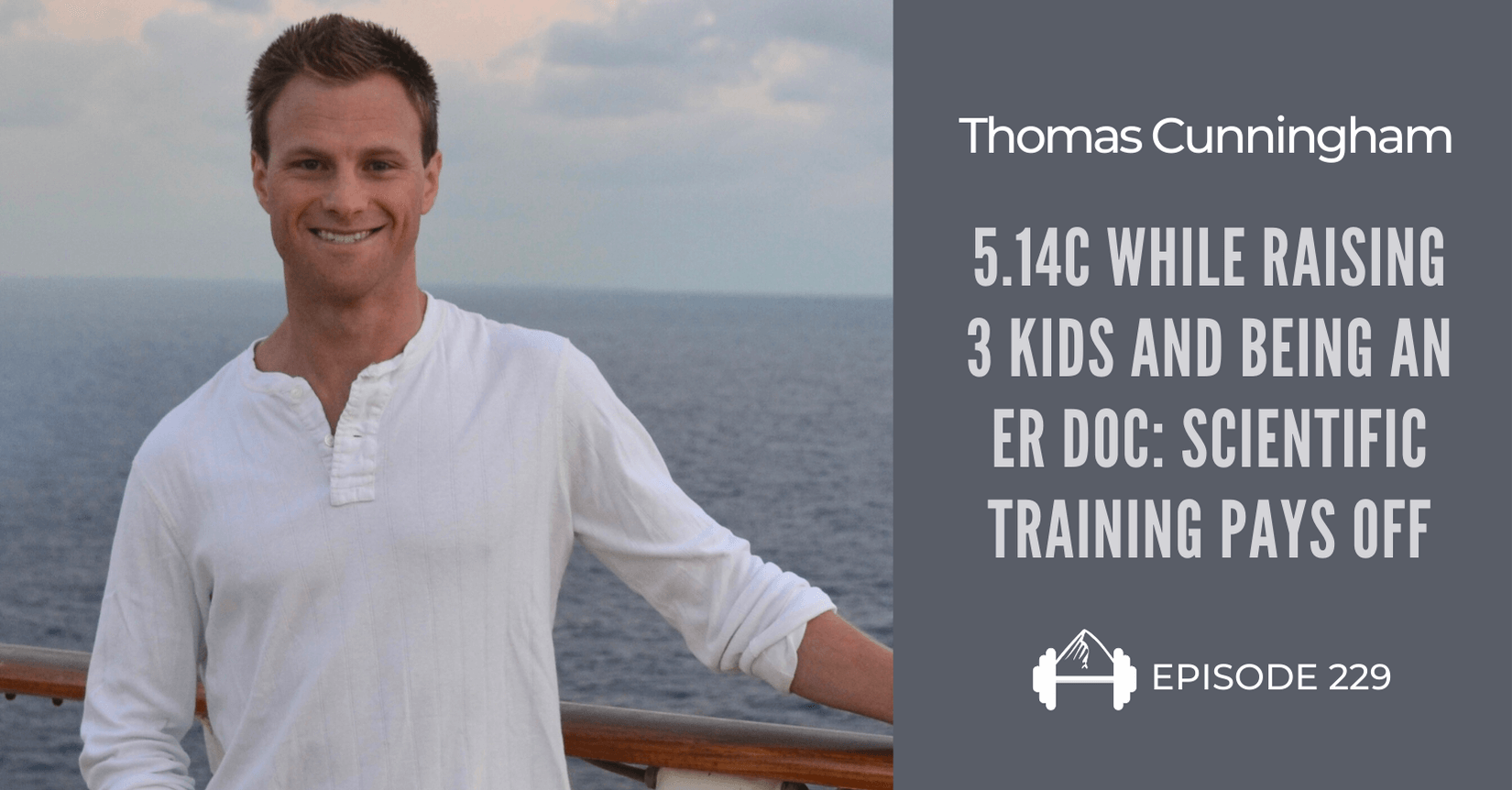A couple weeks ago, Sam Elias texted me and said, “Hey. This ER doctor here in Louisville just sent his first 14c… He’s SUPER intelligent and really researched about training, nutrition, and personal optimization. I think y’all should have him on the podcast. He has a lot to offer.”
Turns out this was his second–not first–14c, which I found out in my interview with him, but everything else Sam said about Thomas was spot on, and I was psyched to reach out to him for an interview.
Thomas is a 36-year-old emergency medicine physician and father of 3 children from Louisville, KY who’s been climbing for around 20 years. After talking to him for a while, I realized he is SUPER scientific about everything he does in climbing. This is no surprise because he’s quite an overachiever in his academic/professional life as well.
He’s published a bunch of academic papers, he was chief resident at the University of Louisville Department of Emergency Medicine a while back, and WHILE he was doing that, he started a medical device company, Inscope Medical, and was VP of Innovations. He also completed an IronMan while he was an intern resident.
Here is his CV if you’re interested.
So he’s an ambitious person, to say the least, and that means he has less time than some of us for climbing and training.
Only getting outside climbing around 10-15 days per year, and focusing all of that time on very hard projects, he has learned that his training and all of his days outside have to be hyperfocused and specific.
He takes us through his training program, including how he trains aerobic capacity, power, power endurance, and strength. He also talks about his research (he’s also a researcher!) on the use of a continuous glucose monitor (CGM) to figure out what food fuels him best, and at what times of day.
He’s currently doing some experimentation with Sam Elias with a CGM, and Thomas and I talked about having a part 2 to this discussion to go more in-depth about that and how he uses other monitors like the Whoop in his every day life and training. More to come on that, though.
This interview and our talk afterward actually inspired me to get a Whoop myself (no affiliation, but check it out if you’re interested in biodata).
Oh, and we also talked about how he rehabbed not one but two pulley ruptures and came back stronger afterward using BFR cuffs.
I loved this talk – it was super inspirational on all levels – and I hope we hear a LOT more from Thomas in the coming years. He will be an asset to the climbing community to take us to the next level in training scientifically, like so many other mainstream sports have already done.





Leave A Comment